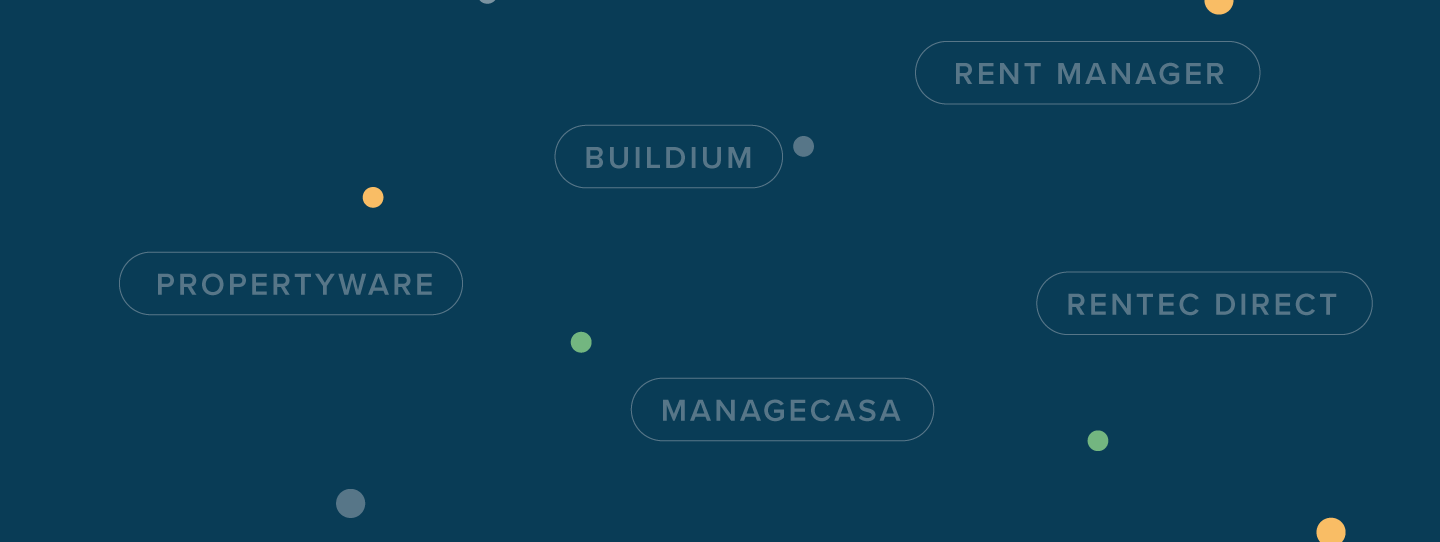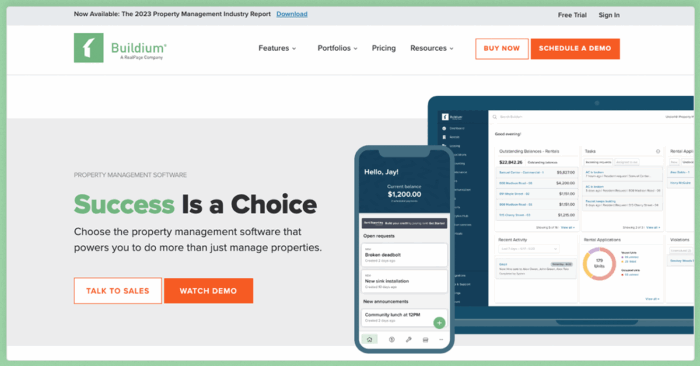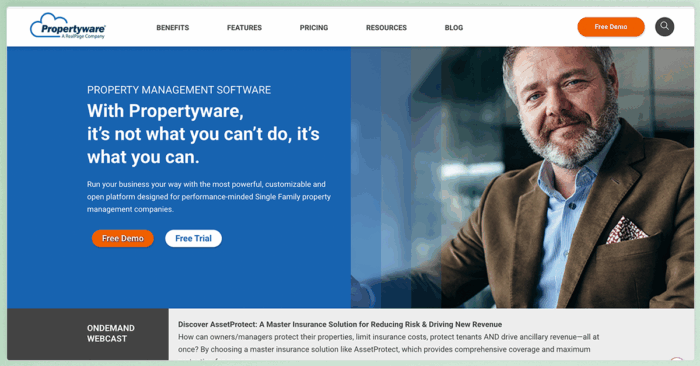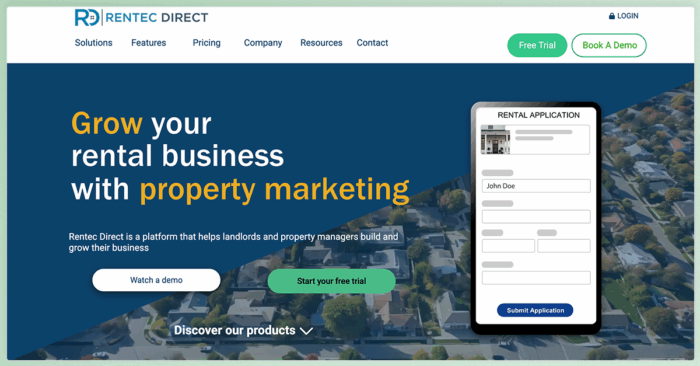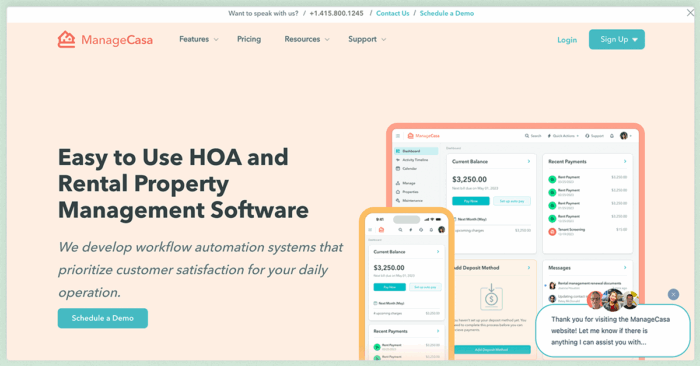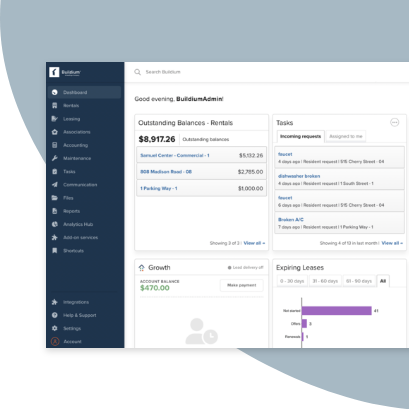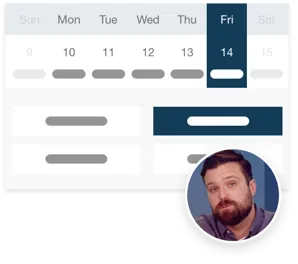Yardi® is a top name in property management software—and with good reason. Its tools for accounting, leasing, and operations are widely used across the industry. But just because it’s well known doesn’t mean it’s the best fit for your business.
Many property managers who start with Yardi Breeze or Yardi Voyager find themselves facing a familiar set of frustrations. And as businesses grow or evolve, these limitations become more difficult to ignore.
So, is it time to switch? If you’re wondering whether there’s a better way to manage your properties in 2026, this guide breaks down five of the best Yardi alternatives on the market.
Why Consider Alternatives to Yardi?
Yardi is a well-established name in property management software, but for many small- to mid-sized portfolios, it’s not always the right fit. There are two main products: Yardi Breeze and Yardi Voyager. Each one targets different ends of the market. Breeze is simplified but limited, while Voyager is robust but often too complex and costly for leaner teams.
Common frustrations with the two platforms mention limited customization, a difficult to navigate interface, and key features locked behind add-ons. Many users also cite a lack of modern integrations and inconsistent support—particularly with Breeze.
If your current platform is slowing you down or forcing workarounds, exploring alternatives could streamline your operations and improve day-to-day workflows.Many options match or exceed Yardi’s capabilities, with powerful usability, strong support, and pricing that scales with your business.
Criteria for Choosing the Right Yardi Alternative
For this post, we’ll be focusing on alternatives to Yardi Breeze and breaking down how each of the options compares in terms of features, pricing, and overall value. Before we examine each platform, let’s explain the criteria that will help you make the right choice.
#1: Look for the Right Combination of Features
Strong property management software should support your entire operation, including leasing, accounting, maintenance, and more. Here’s what to evaluate to make sure your next software investment sets you up for long-term success.
Leasing Tools
Look for software that allows you to customize and automate the leasing process. This means online rental applications, applicant screening, document storage, eSignature capabilities, and automated renewal reminders. These features keep your leasing pipeline moving without manual follow-ups.
Accounting Tools
Accounting software should help you cut down on bookkeeping tasks without . Your next platform should include a true general ledger, bank reconciliation, owner draw automation, and built-in tools for 1099 eFiling. Real-time reporting and integration with payment systems are key to maintaining cash flow visibility.
Maintenance Tools
Maintenance can be one of the biggest time drains for property managers. The right platform should help you create, assign, track, and close work orders while keeping residents informed. Bonus points for mobile apps, vendor communication tools, and 24/7 emergency call center support.
Communication Tools
Communication breakdowns can damage relationships. Opt for resident and owner portals that support real-time updates, document sharing, messaging, and announcements. Bulk email and text capabilities streamline day-to-day outreach.
Marketing Tools
The ability to syndicate listings to sites like Zillow, Apartments.com, or Realtor.com saves time and fills vacancies faster. Some platforms also offer branded websites, guest card management, and lead nurturing tools built in.
Reporting and Business Analytics Tools
Don’t settle for basic monthly statements. Your next platform should offer real-time dashboards, budget comparisons, leasing and maintenance KPIs, and customizable owner reporting. Data visibility is what turns property management into a strategic business.
#2: Consider Customization Capabilities and Partner Integrations
Your software should adapt to how you run your business. Platforms with open APIs, custom workflows, and third-party app ecosystems allow you to create a tech stack that works best for your team.
Integrations with tools such as HappyCo (for inspections), Clyr (for accounting), or Property Meld (for maintenance) can help you target specific pain points in your business, so look for software with a solid list of integrations and partners.
#3: Assess User Experience and Customer Support
No one wants to manage properties through outdated interfaces or complicated menus. User-friendly design makes onboarding faster, reduces training costs, and ensures your whole team adopts the system.
Just as important: Can you get help when you need it? Live chat, phone support, knowledge bases, dedicated onboarding are all essential, especially during the first 90 days.
#4: Analyze the Cost-Effectiveness of Yardi Alternatives
While Yardi Breeze may look cost-effective upfront, many users report rising costs due to feature gating and add-on fees. When comparing software:
- Look at what’s included in each plan
- Ask about implementation, training, and support costs
- Clarify per-unit pricing and monthly minimums
- Consider how pricing scales with your portfolio
The best value doesn’t always mean the lowest price. It means investing in features that you’ll use frequently to support your business, work more efficiently, and grow your bottom line.
Top Alternatives to Yardi Breeze
These five alternatives can offer better value, easier navigation, and stronger features. They’re ideal for property managers who want to spend less time on software and more time growing their business.
1. Buildium
A Yardi Alternative with Comprehensive Property Management Features
Buildium® is a comprehensive Yardi alternative that’s well-suited for a variety of property managers. Whether you manage single-family homes, multifamily properties, or associations, Buildium helps you centralize operations without sacrificing usability.
Its design is clean, intuitive, and built for modern property managers. You won’t need a team of consultants to get started, and most users find they’re up and running in days instead of weeks.
While Yardi Breeze can feel like a patchwork of disconnected tools, Buildium’s platform is integrated, scalable, and designed for real-world property managers. It brings everything into one powerful dashboard.
Features
Buildium combines a wide range of property management features into one platform, designed to make daily tasks more intuitive and connected.
- Full general ledger accounting with real-time reporting and 1099 eFiling
- Online applications, tenant screening, and eLeasing
- Work order creation and vendor coordination
- HappyCo-powered inspections via mobile
- Tenant and owner portals
- Custom dashboards and owner statements
- Integrated payment processing
- Access to a 24/7/365 Maintenance Contact Center
- API access and full integrations with Clyr, Property Meld, and more
Pricing
Buildium offers three clear pricing tiers, making it easy for managers of any portfolio size to find the right fit without hidden costs.
- Essential: Starting at $62/month, Essential includes core accounting, maintenance, tasks, violations, communications, and online portals.
- Growth: Starting at $192/month and includes reduced incoming ACH fees, unlimited eSignatures, and analytics/insights features.
- Premium: Starting at $400/month; it waives incoming ACH fees and adds Open API and Priority Support on top of Growth.
2. Propertyware
A Yardi Alternative for Customizable Software
Propertyware® is a go-to platform for property managers who want complete control over their operations. Its modular design and customizable workflows make it ideal for managing single-family rental portfolios or geographically dispersed properties.
Compared to Breeze, Propertyware offers far greater flexibility and is purpose-built for scaling teams that require more.
Features
Propertyware stands out for its flexibility, giving property managers control through customizable workflows and reporting.
- Customizable workflows and reporting tools
- Full accounting, bank reconciliation, and AR/AP management
- Automated maintenance and vendor dispatch
- Tenant and owner portals
- Inspection scheduling and mobile access
- Bulk messaging and in-platform texting
- API integrations and support for custom app connections
- Contact Center with inbound call routing
Pricing
Propertyware uses per-unit pricing with minimums, scaling based on portfolio size and the level of functionality you need. Setup fees typically equal 2x the monthly subscription rate.
- Basic: $1.00/unit/month, $250 monthly minimum
- Plus: $1.50/unit/month, $350 monthly minimum
- Premium: $2.00/unit/month, $450 monthly minimum
3. Rentec Direct
A Yardi Alternative That Covers the Basics
Rentec Direct® is ideal for landlords and small property managers who want a clean, cost-effective alternative to Breeze. It doesn’t offer the same depth as Buildium or Propertyware, but it does the basics well.
Features
Rentec Direct focuses on core property management functions, keeping things simple for landlords and smaller teams.
- Online rent collection and tenant portals
- Full ledger accounting and tax form generation
- Maintenance work orders and vendor tracking
- Tenant screening
- Integration with QuickBooks and ACH systems
Pricing
Rentec Direct offers Rentec Pro and Rentec PM with unit-based pricing; current starting prices are $55/mo (Pro) and $65/mo (PM).
4. Rent Manager
A Yardi Alternative with Offline Capabilities
Rent Manager® is known for its flexibility, offering both a desktop and cloud version to meet different portfolio needs. While Yardi Breeze limits customization and requires managers to work within a set framework, Rent Manager gives teams more control, including offline access and tailored configurations.
Features
Rent Manager’s feature set is designed for property managers who want more than just the basics by providing advanced tools that support varying portfolios.
- Accounting and general ledger
- Marketing, websites, and lead tracking
- Maintenance dispatching
- Custom reporting
- CRM, VOIP phone system, and Rent Manager University
Pricing
Rent Manager provides custom/usage‑based pricing, so you’ll have to contact their sales team for a quote.
5. ManageCasa
A Yardi Alternative with Add-Ons and HOA Capabilities
ManageCasa® emphasizes association management, offering built-in tools for HOAs and mixed portfolios. While Yardi Breeze provides basic association functionality, it lacks the dedicated workflows that HOAs often need. ManageCasa fills that gap with features designed specifically for dues collection, board communication, and compliance.
Features
ManageCasa emphasizes association management, with tools designed to support HOAs and mixed portfolios.
- Online dues collection and budgeting
- Maintenance workflows
- Owner and board member portals
- Document storage and eSignature
- Mobile support for residents
Pricing
ManageCasa uses per-unit pricing with simple tiered options, so managers only pay for what they need.
- Base: $1.25/unit/month
- Premium: $2.50/unit/month
How to Choose Between Yardi Alternatives
Whether it’s limited features, rising costs, or a clunky interface, start by pinpointing what’s not working with your current platform. Then compare alternatives based on what matters most. That could be ease of use, included features, support quality, or how well the software scales with your business.
If you need full customization, a platform like Propertyware might be a better match. For an all-in-one, easy-to-use experience with strong support, Buildium stands out. Most importantly, take advantage of free trials or demos to find the right fit before you commit.
Buildium offers a 14-day free trial and live demo so you can get a feel for the platform before committing. With Growth and Premium plans, onboarding support is included to make the transition as smooth as possible.
How to Transition to Your New Software Platform
Switching property management software involves six key steps to minimize disruption and ensure success.
Step 1: Understand Onboarding and Support
Start by understanding what onboarding support your provider offers. Some platforms include guided setup and dedicated specialists. Knowing this upfront helps you plan the transition effectively.
Step 2: Prepare and Export Your Data
Next, prepare and export your data from your current system. This includes resident and owner information, leases, financial records, and maintenance history. Cleaning and organizing this data before import will prevent errors and make your reporting more accurate once you go live.
Step 3: Train Your Team
Training your team is just as important as moving the data. Even the most user-friendly platform requires some learning. Make sure your staff knows how to handle core tasks like logging maintenance requests, updating resident records, and pulling financial reports. A confident team will adopt the system faster.
Step 4: Communicate with Owners and Tenants
If your transition affects residents or owners, communication is key. Let them know what’’s changing, why you’’re making the switch, and how it will benefit them—whether that’’s through new portals, online payments, or improved communication channels.
Step 5: Test Workflows Before Going Live
Before you fully rely on the new software, take time to test out workflows. Run through a leasing cycle, enter maintenance requests, and generate sample reports. This will highlight any issues early and give your team practice before the system is live.
6: Make It an Ongoing Process
Finally, remember that transitioning to a new platform is not a one-time event. It’s an ongoing process. Regularly assess whether you’re using all of the available features, identify any lingering pain points, and take advantage of updates or integrations that can make your operations even more efficient.
Finding the Right Property Management Software for Your Business
Choosing the right software is a big step for your business. While Yardi has its place, the alternatives we’ve covered offer more flexibility, better usability, and stronger support for growing portfolios, particularly in the residential sector.
By focusing on your specific needs,, you can find a system that helps you work more efficiently. The best way to know for sure is to see the software in action. If you think Buildium might be the right fit, you can explore the platform with a 14-day free trial. or by signing up for a guided demo.
Frequently Asked Questions
What are some popular alternatives to Yardi?
Buildium leads for ease of use and all-in-one features, while Propertyware excels at customization for single-family portfolios.
How does Yardi Breeze compare to Buildium?
Buildium includes unlimited eSignatures in Growth and Premium; Essential charges per eSignature. Yardi Breeze indicates online leasing/e-signatures may incur additional fees.
Is switching from Yardi hard?
Not with the right support. Most modern platforms include data import tools, onboarding specialists, and step-by-step setup resources to make the transition smooth.
What’’s the best property management software for small portfolios?
Buildium’’s Essential plan and Rentec PM are strong choices for landlords or managers with fewer than 100 units. Both balance affordability with core features.
Can I integrate other tools with Yardi alternatives?
Buildium offers both an Open API and a Marketplace; Propertyware offers an Open API that enables integrations with third‑party apps.
Does Yardi charge extra for certain features?
In Yardi Breeze, online leasing/e-signatures and some features are marked with ‘Additional fees apply,’ and advanced/custom reporting capabilities are in Breeze Premier.
Which Yardi alternative is best for single-family home management?
Propertyware was designed with single-family rental portfolios in mind, offering deep customization and maintenance automation. Buildium is also a good option for mixed or growing portfolios.
Can I test a Yardi alternative before committing?
Yes, most platforms offer free trials. Buildium provides 14 days to test all features risk-free.
Will switching software disrupt my tenants or owners?
Not if handled well. Most platforms include portals that make it easy for tenants and owners to transition. Clear communication and phased rollouts can minimize confusion.
